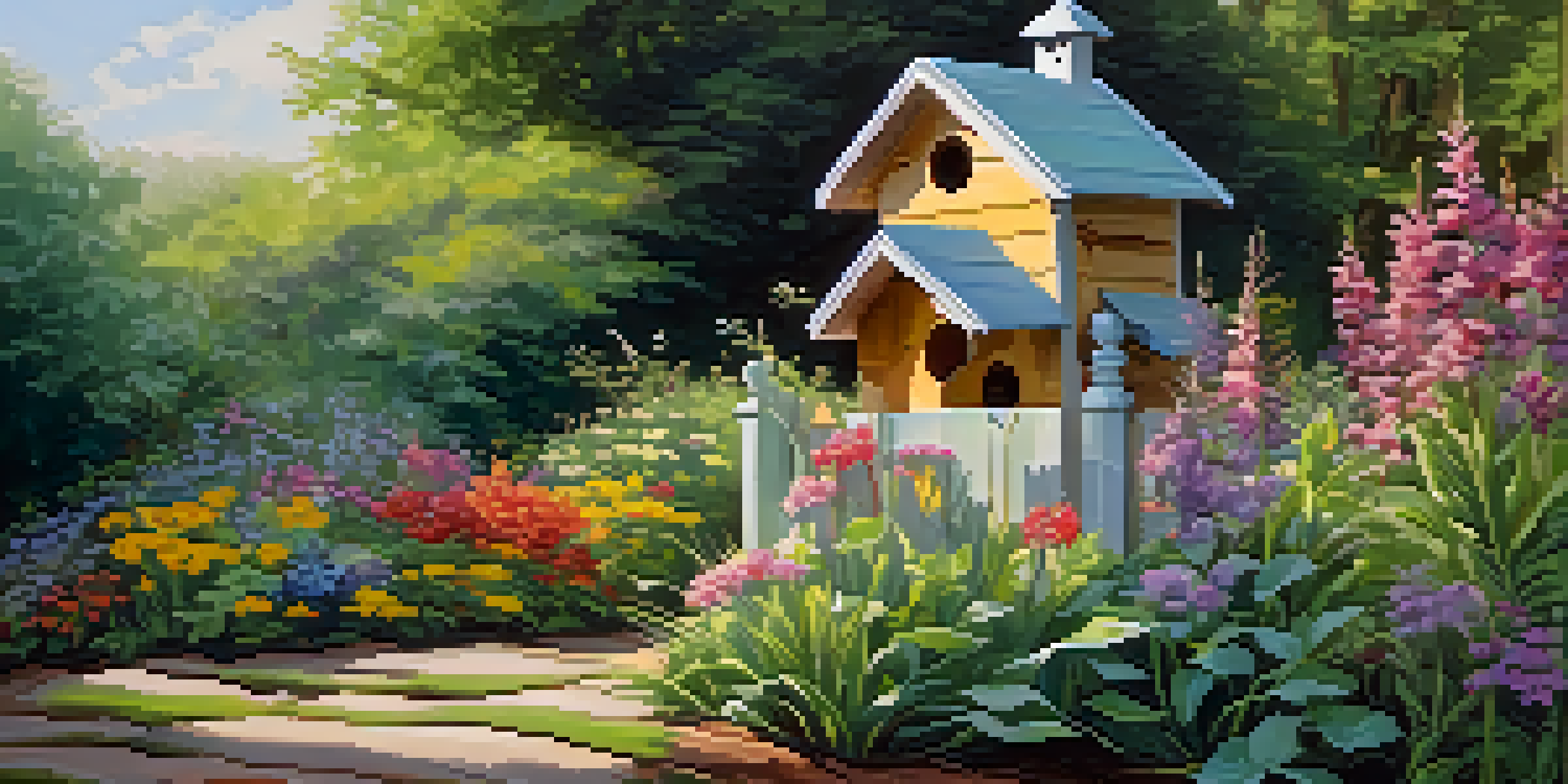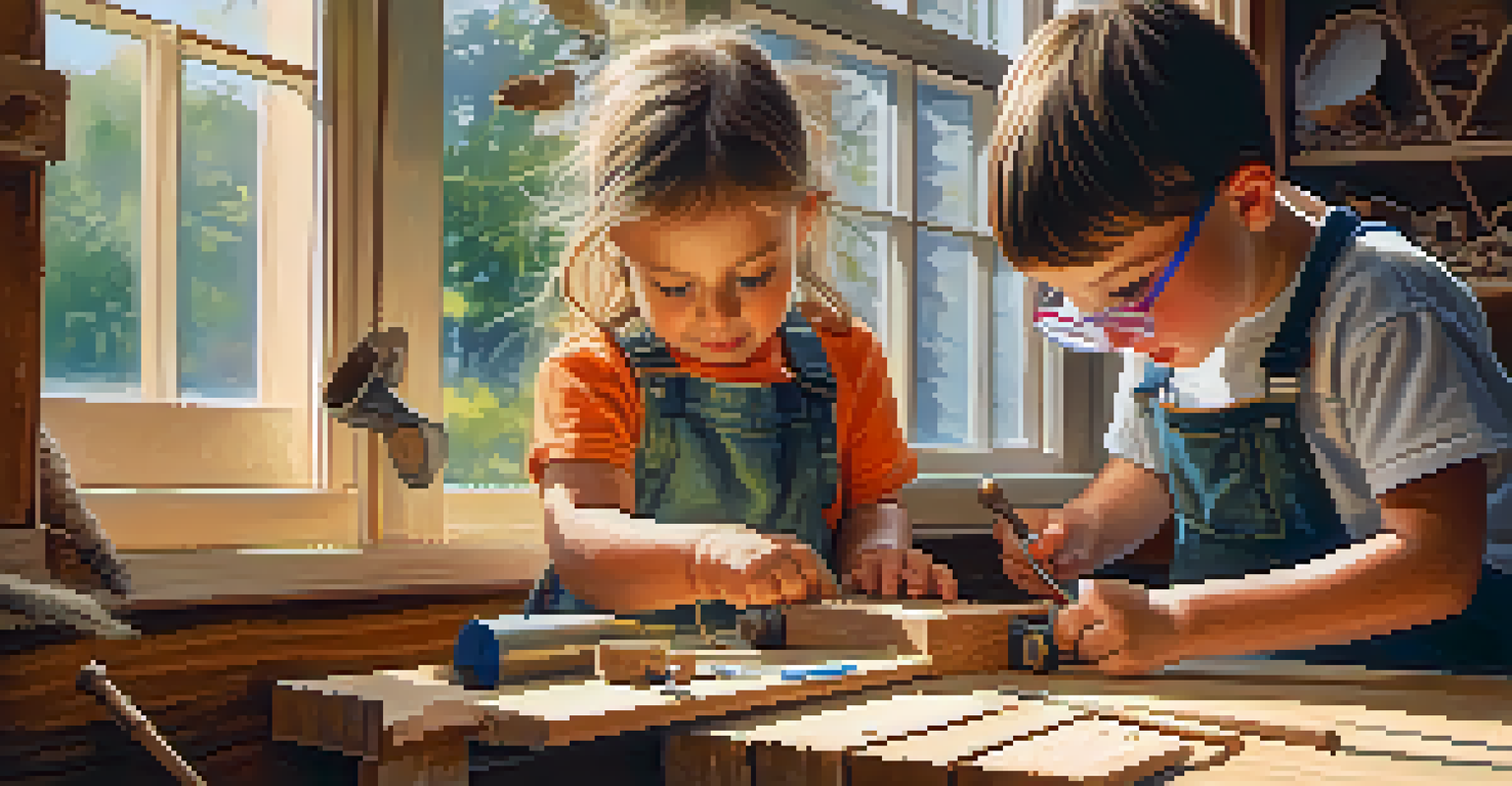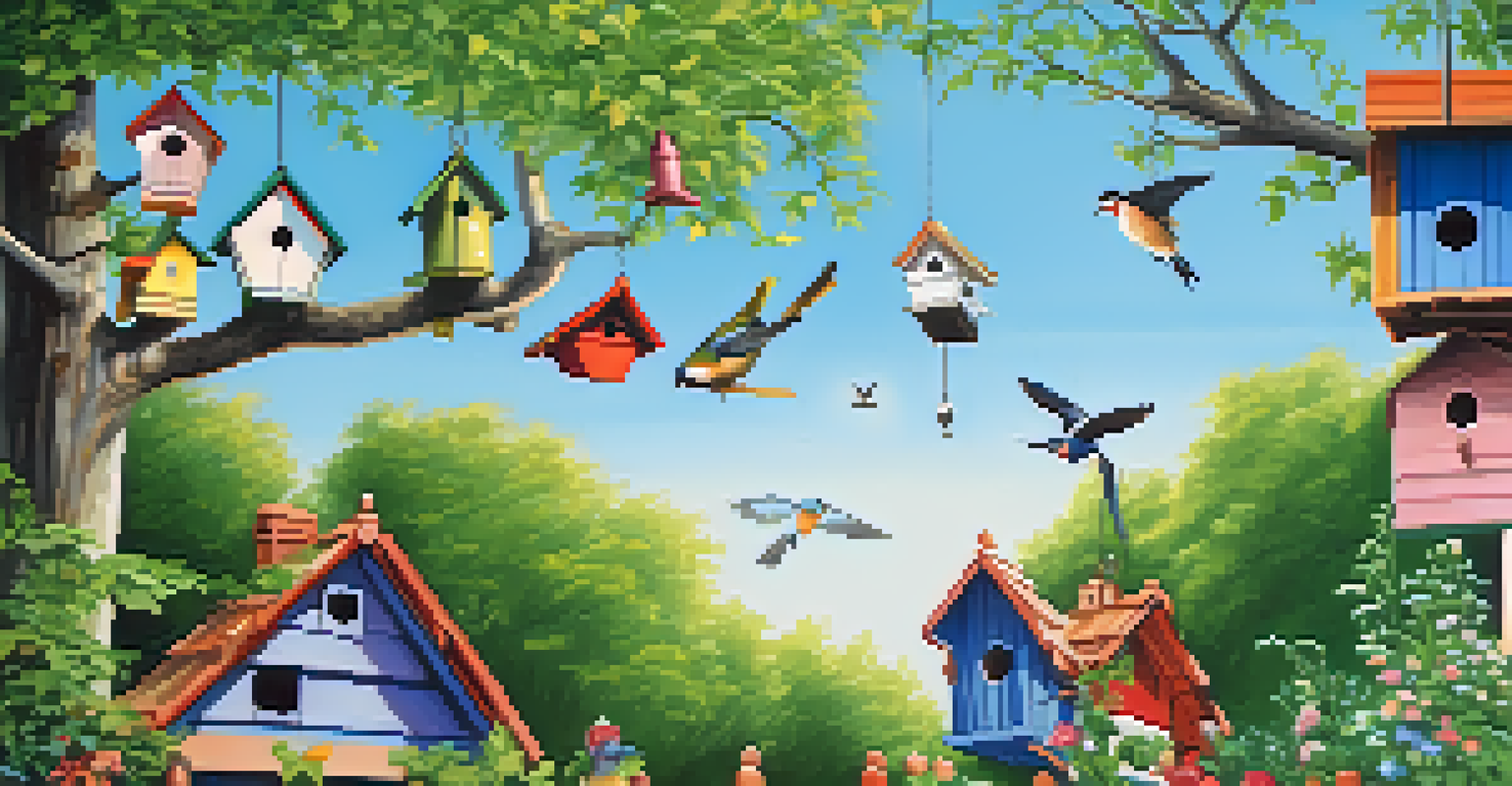Building Birdhouses for Specific Bird Species: A Guide

Understanding the Needs of Different Bird Species
Before diving into birdhouse construction, it's vital to understand the specific needs of the birds you want to attract. Different species have unique preferences regarding size, entrance hole diameter, and nesting materials. For instance, bluebirds prefer houses with larger openings, while wrens like smaller, cozy spaces.
The love for all living creatures is the most noble attribute of man.
Additionally, consider the habitat where these birds thrive. Some birds prefer open fields, while others favor wooded areas. Tailoring your birdhouse to suit these specific requirements not only increases your chances of attracting them but also ensures their comfort and safety.
By taking the time to research and understand these factors, you can create a welcoming environment that encourages birds to nest in your yard, enriching your outdoor experience.
Choosing the Right Materials for Your Birdhouse
Selecting the right materials is crucial when building a birdhouse. Natural wood, like cedar or pine, is often the best choice as it withstands the elements and provides a safe environment for birds. Avoid treated wood, as it may contain harmful chemicals that could be detrimental to the birds.

In addition to wood, consider using non-toxic paints or stains to protect your birdhouse from the weather while ensuring it's safe for your feathered friends. Remember, the goal is to create a durable and safe home that allows birds to thrive.
Understand Bird Needs First
Researching the specific needs of different bird species is essential for creating a suitable birdhouse that attracts and comforts them.
Lastly, think about insulation and ventilation. Adding small holes for airflow can help regulate temperature, making your birdhouse a comfortable nest for baby birds.
Designing Birdhouses for Common Species
Different bird species require different designs. For example, Eastern Bluebirds prefer houses that are 6x6 inches with a 1.5-inch entrance hole, while House Wrens thrive in smaller, 4x4-inch houses with a 1-inch entrance. Designing your birdhouse with these specifications in mind is essential for attracting the right birds.
Birds are indicators of the environment. If they are in trouble, we know we'll soon be in trouble.
A simple design can work wonders; just ensure that it has an adequate drainage system and is easy to clean after the nesting season. Remember, a clean birdhouse is crucial for the health of the birds, preventing diseases from spreading.
Don’t forget to add a sloped roof to keep rain out and a small perch outside the entrance. While some birds don’t need perches, many enjoy having that extra landing space.
Placing Your Birdhouses in the Right Location
Location is key when it comes to attracting birds to your newly built birdhouses. Ideally, they should be placed at least 5-10 feet off the ground and away from strong winds. Positioning them near trees or shrubs can provide natural shelter and protection for the birds.
It's also crucial to consider the direction your birdhouse faces. Houses that face east or southeast typically receive morning sunlight, which helps keep the birds warm. Avoid placing them in direct sunlight for the entire day, as this can lead to overheating.
Choose Safe Materials
Using natural wood and non-toxic finishes ensures a durable and safe environment for birds in your birdhouses.
Lastly, be mindful of nearby predators. Placing birdhouses away from areas where cats or other animals can easily access them will help keep your feathered friends safe.
Maintaining Your Birdhouses for Longevity
Once you’ve built and placed your birdhouses, maintenance is essential to ensure they remain safe and functional. Regularly check your birdhouses for any signs of wear or damage, especially after storms or harsh weather conditions. Repairing any holes or cracks can prevent unwanted pests from entering.
Cleaning your birdhouses at the end of each nesting season is also vital. Remove old nesting material and debris to make way for new inhabitants. A clean house not only promotes health but also encourages birds to return year after year.
If you notice that a birdhouse isn’t attracting any visitors, don’t be discouraged. Sometimes, it just takes a little time for birds to discover their new home, so patience is key!
Attracting Birds with Additional Features
To enhance your chances of attracting birds, consider adding features that make your yard more inviting. Planting native flowers, shrubs, and trees can provide natural food sources and shelter. Birds are more likely to nest in areas where they feel safe and have easy access to food.
Bird feeders and baths are also great additions. A birdbath provides a critical water source, especially during hot months, while feeders stocked with seeds can attract a variety of species. Just ensure these are regularly maintained to keep birds coming back.
Maintain Birdhouses Regularly
Regular maintenance and cleaning of birdhouses are vital for their longevity and the health of the birds that inhabit them.
Creating a bird-friendly environment means providing not just shelter but also a complete habitat. The more inviting your space is, the more likely birds will choose to call it home.
Encouraging Children to Get Involved in Birdhouse Building
Building birdhouses can be a wonderful family project, especially when involving children. It offers a fantastic opportunity to teach them about nature, responsibility, and the importance of wildlife conservation. Plus, kids often enjoy the hands-on experience of crafting something meaningful.
Start by letting them choose which bird species to attract and research what type of birdhouse is needed. Then, let them participate in measuring, cutting, and assembling the materials. This not only fosters creativity but also builds valuable skills.

Encouraging children to observe the birds that visit can spark a lifelong interest in nature and wildlife. It’s a perfect way to bond while nurturing a love for the environment.